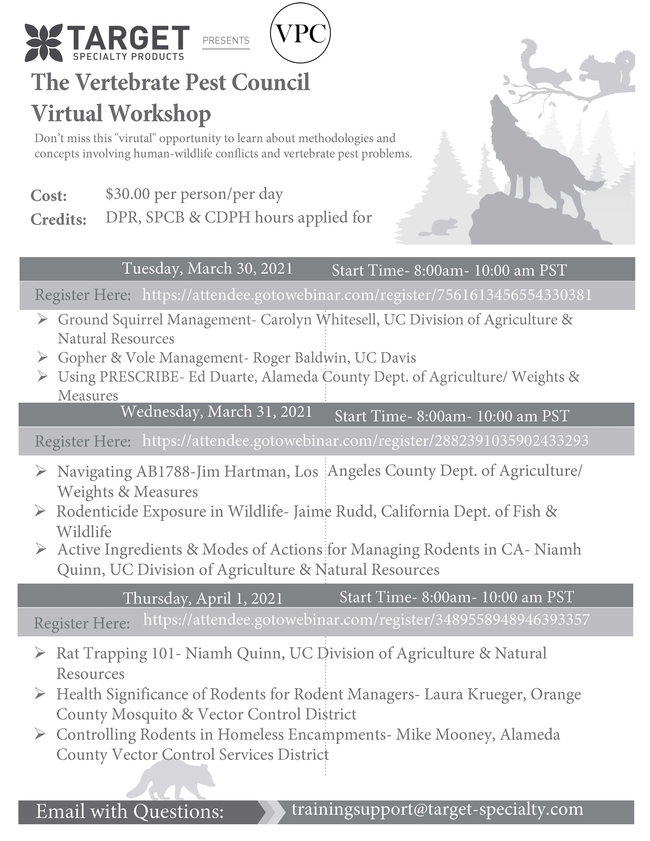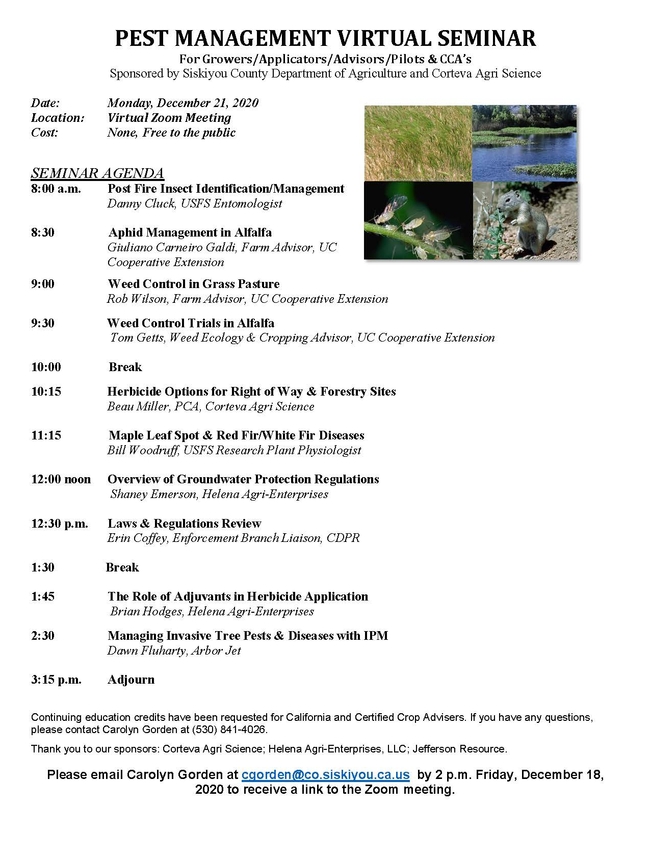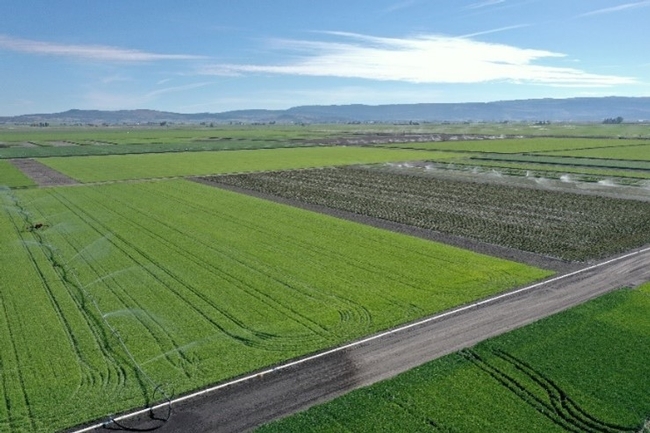Informative Updates on Ag and Natural Resources from the Far North
- Editor: Laurie Askew
Published on: September 17, 2021
To register, go to the Western Alfalfa & Forage Symposium webpage.
Focus Area Tags: Agriculture, Pest Management
Comments: 0
- Editor: Laurie Askew
Published on: March 4, 2021

Public Value:
UCANR: Promoting economic prosperity in California
- Editor: Laurie Askew
Published on: January 31, 2021

Public Value:
UCANR: Promoting economic prosperity in California
Focus Area Tags: Agriculture, Pest Management
Comments: 0
- Author: Laurie Askew
Published on: December 17, 2020

Public Value:
UCANR: Promoting economic prosperity in California
- Author: Giuliano C. Galdi
- Author: Thomas Getts
- Author: Laura Snell
- Author: Nicole Stevens
- View More...
Published on: November 18, 2020
Good afternoon Growers!
Just like you, the Intermountain UCCE researchers have had a busy year, despite the turmoil surrounding us. Now that field work is done, it's time to take a look at the results.
In the attached Intermountain UCCE Research Update you'll find articles on alfalfa, grain and even livestock composting. Take a break, find a place to read and learn about pests, irrigation and maximizing yields. It's all there.
Thank you for your support of our Intermountain UCCE researchers Giuliano Galdi, Rob Wilson, Tom Getts, Laura Snell and Nicole Stevens.
We appreciate you.
Attached Files
Intermountain UCCE Research Update

Spring Wheat at IREC
Public Value:
UCANR: Promoting economic prosperity in California
Viewing 1-5 of 12



